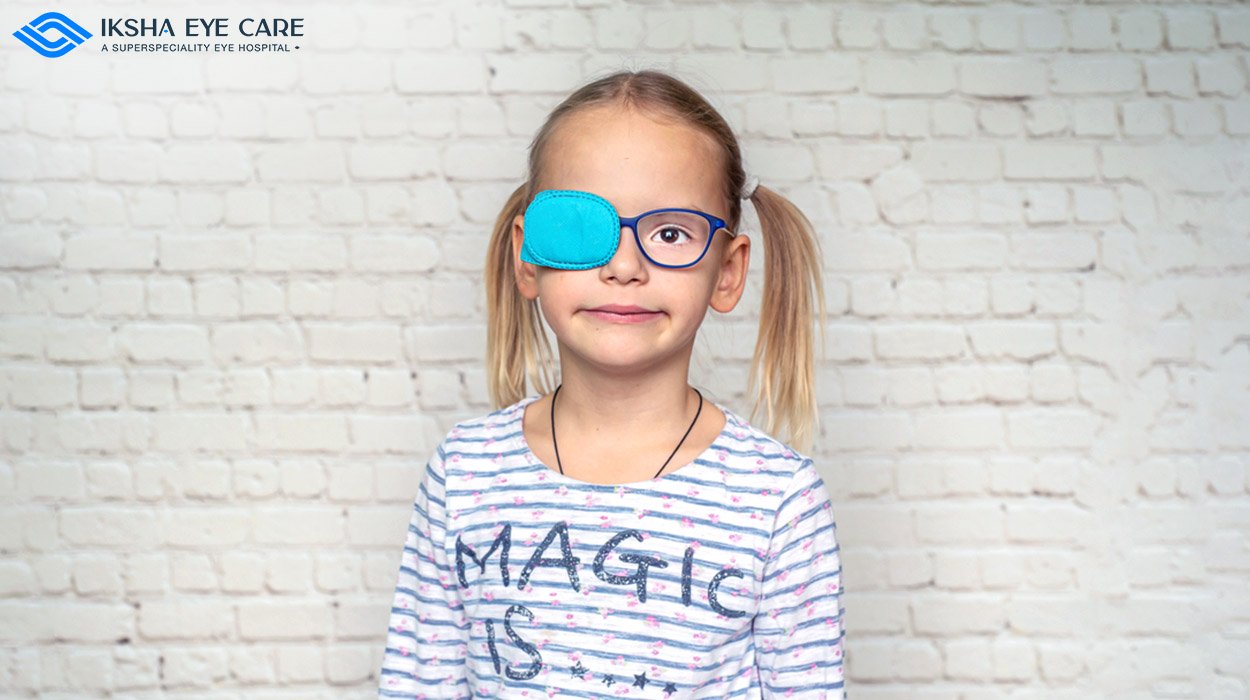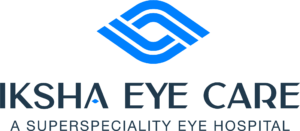
A lazy eye is when vision in one eye or both eyes does not develop appropriately. In medical terms, it is called Amblyopia. This interferes with development of finer visual functions like appreciating contrast and depth perception.
Lazy eye usually develops in early years of life; if identified correctly, it can be treated. It happens because one or both eyes cannot build a solid link to the brain, making one eye or both eyes weak and subsequently ‘lazy’ to carry out its main function i.e vision. The brain favors the better eye allowing the weaker eye to get worse with time.
Symptoms of lazy eye are:
– Trouble telling how near or far away an object or person is
– Squinting or shutting one eye
– Head tilting
– Bump into things on a particular side
– Favor one side of the body
Who can have a lazy eye?
Children with
- Uncorrected refractive error
- Squint (misaligned eyes)
- Any other cause obscuring or obstructing the light to enter in eyes like cataract
What happens if lazy eye is left untreated?
Uncorrected Refractive Errors:
In case, child is having glasses and he or she is not wearing it, especially if numbers are high or number is in one eye only, image on the retina (visual membrane) will be blurred. The first 8 years of life is very crucial for vision development. Blurred image causes a weak eye-brain coordination and thus unable to attain vision fully. Thus, the eye’s potential vision may not be achieved and hence locked at a certain percentage of vision. As a result of which, even if the corrective glasses are prescribed at a later age, the vision might not achieve the 100% mark.
Thus, it’s essential to get your child screened at 6 months, 1 year, preschool (3 years) , preprimary ( 5 years) and then annually, even if the child is not complaining of any vision problems.
Strabismus:
Lazy eyes can cause squint and squint can cause lazy eyes.
Cataract
Children can be born with cataract or can develop cataract at a later age. This prevents the light to fully enter inside the eyes and fall on its back part called as the retina (visual membrane). This affects the eye-brain coordination. It is a myth that children should not undergo cataract removal at an early age. Early removal of cataract can help the outside light to fully reach the back part of the eye after entering the eye and can result in better vision development.
Multiple questions may be there about the lazy eye that can be resolved. Please consult an experienced and certified Child Eye Care specialist known as Pediatric Ophthalmologist for proper diagnosis and treatment.
Can one Treat Lazy Eye?
Treatment is possible if the lazy eye has been noticed in early childhood. Glasses, eye drops, exercise, contact lenses, eye patches, or vision therapy can help to improve the eyesight and function of both eyes.
Can we treat lazy eye in adulthood?
With latest advances in technology, if lazy eye is not treated in childhood, we still have a hope to treat it in adulthood.
Trial of patching and recent software based exercises might help us to achieve better vision. Both office based and home based therapies are available. For further queries, please consult your Pediatric Ophthalmologist.
When you are the one who is looking for proper treatment for impaired eye issues in your beloved child, Iksha Eye Care superpeciality eye hospital situated conveniently at Andheri, Mumbai, is one of the top-rated finest eye hospitals providing the latest equipment and technology for all child eye care treatments. Iksha Eye Care hospital is known for one of the best squint surgery in Mumbai. Iksha Eye Care consists of an experienced team who understands the needs and moods of a child and is headed by Dr Pooja Ghodke, one of the best Pediatric Ophthalmologist in Mumbai. Today we are treating numerous patients to help them see the world clearly under the guidance of Dr. Ghodke, who founded the hospital in 2020 to provide best-in-class eye treatment under one roof and at an affordable cost. If you are looking for an expert for your kid, connect instantly for a check-up & know everything about lazy eye.




